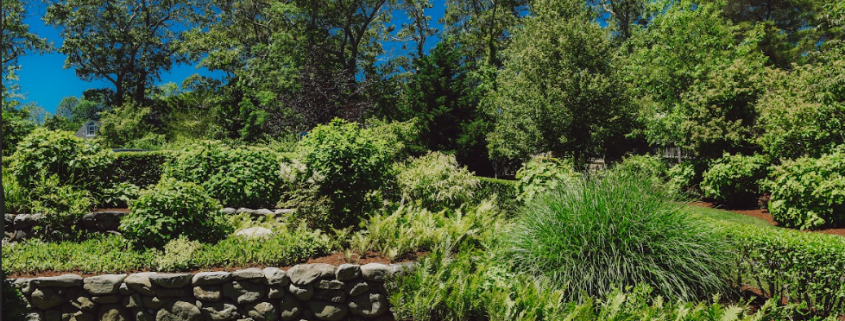Creating a Sustainable Landscape: Tips and Strategies for Eco-Friendly Landscaping
Are you looking for ways to create a more sustainable and eco-friendly landscape? With the increasing awareness of environmental issues, more and more people are looking for ways to reduce their impact on the environment. From using native plants to reducing water usage, there are many steps you can take to make your landscape more sustainable. In this blog, we will provide you with tips and strategies for creating a more sustainable and eco-friendly landscape. Read on to learn more about how you can create a healthier and more sustainable landscape for yourself and the environment.
Creating a beautiful and sustainable landscape is an important goal for many homeowners. Not only does it enhance the visual appeal of your property, but it also has a positive impact on the environment. With the increasing importance of sustainability and eco-friendliness, more people are seeking ways to create landscapes that are both attractive and environmentally responsible. In this blog post, we will explore some tips and strategies for eco-friendly landscaping that can help you create a sustainable and beautiful outdoor space.
The Benefits of Sustainable Landscaping
Sustainable landscaping is an eco-friendly approach to landscaping that helps protect the environment and conserve natural resources. It involves choosing native plants, utilizing sustainable materials, and implementing water-saving practices in order to create a beautiful and healthy landscape. Sustainable landscaping has many benefits, including reducing water usage, conserving soil, and providing habitats for wildlife.
By choosing native plants, you can help reduce water usage. Native plants are adapted to the local climate and soil conditions, making them more resistant to drought and disease. Native plants also require less maintenance than non-native plants, since they are already adapted to the local environment. Additionally, native plants provide food and shelter for local wildlife, helping to create a healthier ecosystem.
Another benefit of sustainable landscaping is its ability to conserve soil. By using mulch and compost, you can help keep the soil in your yard healthy and full of nutrients. Mulch and compost will keep the soil from becoming dry and compacted, and help retain moisture and nutrients. Additionally, composting helps reduce waste and can provide a great source of fertilizer for your plants.
Sustainable landscaping also helps reduce your environmental impact. By utilizing sustainable materials such as recycled concrete, bricks, and wood in your landscaping, you can help reduce the amount of waste that ends up in landfills. Additionally, by implementing water-saving practices, such as using rain barrels or installing a drip irrigation system, you can help conserve water.
Sustainable landscaping is a great way to help protect the environment, conserve resources, and create a beautiful landscape. By choosing native plants, utilizing sustainable materials, and implementing water-saving practices, you can create an eco-friendly landscape that benefits your yard and the surrounding environment.
Designing an Eco-Friendly Garden
Designing an eco-friendly garden is an excellent way to help reduce your environmental impact. Sustainable landscaping practices can help conserve natural resources, reduce water usage, and reduce pollution. When designing your eco-friendly garden, consider the following tips:
Choose plants that are native to your area or naturalized to the local climate. Native and naturalized plants require less water, fertilizers, and pesticides to thrive, making them an ideal choice for any eco-friendly garden.
Design your garden with an eye towards water conservation. Incorporate features like rain barrels, drip irrigation systems, and pervious paving to help reduce water usage. Consider planting drought-tolerant and low-maintenance plants that require little supplemental water.
Utilize sustainable materials in your garden design. Reclaimed wood, recycled glass, and permeable pavers are just a few of the many materials available to create an eco-friendly landscape.
Make sure your garden is designed to capture, store, and use rainwater effectively. Incorporating rain barrels, swales, and other water-capturing features can help conserve water and reduce runoff.
Utilizing Sustainable Materials for Landscaping
Utilizing sustainable materials for landscaping is an important part of creating an eco-friendly garden. Sustainable materials can help conserve natural resources, reduce energy usage, and reduce waste. When selecting materials for your landscape, consider the following tips:
Choose materials that are locally sourced and produced. Locally sourced materials can help reduce your environmental impact by eliminating the need to transport materials long distances.
Look for materials that are durable and long-lasting. Materials that are designed to last, like stone and concrete, can help reduce the need for frequent replacement.
Reuse and recycle existing materials whenever possible. Reclaimed wood, recycled glass, and other reclaimed materials can help reduce the use of new resources.
Look for materials that are certified green. Certification programs like FSC and Green Seal certified materials as eco-friendly and help ensure that you are using sustainable materials in your landscape.
Select materials that require little maintenance. Low-maintenance materials like rock and gravel can help reduce the need for frequent upkeep.
Incorporate green building practices into your landscape design. Incorporating green building practices like solar energy, recycled materials, and low-water landscaping can help reduce your environmental impact.
Implementing Water Saving Practices for the Yard
When it comes to sustainable landscaping, one of the best practices to implement is water conservation. Water is an essential resource, and the more we conserve it, the better off we will be. There are a variety of techniques that can be used to save water in your yard, such as using native plants, installing a rainwater collection system, and utilizing a drip irrigation system.
Native plants are adapted to the climate in which they live and are more drought-tolerant, thus requiring less water than non-native species. By incorporating these plants into your landscape design, you can reduce the amount of water needed for your plants to thrive.
Rainwater collection systems are an effective way to capture and store water for use in your garden. These systems can be installed in the form of rain barrels, cisterns, or even underground storage tanks. The captured water can then be used for watering plants, washing cars, or other outdoor activities.
Installing a drip irrigation system is another great way to conserve water in your yard. Drip irrigation systems use less water than traditional sprinkler systems, as the water is slowly released directly to the root zone of the plants. This minimizes water waste and helps to ensure that the plants are receiving the proper amount of water.
Incorporating Composting and Other Eco-Friendly Landscaping Practices
Composting is an excellent way to reduce waste and create nutrient-rich soil for your garden. Composting involves breaking down organic materials such as food scraps, yard trimmings, and other plant matter into a rich, soil-like material. This compost can then be used to nourish plants and improve soil quality. Not only does composting reduce waste, but it also helps to reduce the need for chemical fertilizers and pesticides.
Another great way to make your landscape more eco-friendly is by planting cover crops. Cover crops are grown between the main crops and are used to protect the soil from erosion, reduce weed growth, and improve the soil’s structure and fertility. These crops can also be used to produce biomass, which can be used as mulch or compost.
Using mulch is another great way to conserve water and reduce weeds in your garden. Mulch acts as a protective layer over the soil and helps to prevent evaporation of water from the soil. Mulch also helps to keep the soil cool, reducing the need for additional water.
Finally, it is important to practice proper maintenance of your landscape. This includes removing weeds regularly, trimming plants, and pruning trees. These practices help to keep your landscape healthy and reduce the need for chemical pesticides and fertilizers.
Conclusion
Sustainable landscaping can be an excellent way to reduce the environmental impact of your outdoor space while also creating a beautiful and inviting outdoor area. The benefits of sustainable landscaping include reducing water waste, utilizing natural materials, and creating an environment that is attractive and environmentally friendly. When choosing plants for your landscape, look for native and drought-tolerant species that require minimal care and maintenance. Utilize sustainable materials like wood, stone, and gravel in your landscaping design, and incorporate water-saving practices like xeriscaping, water-efficient irrigation, and rainwater harvesting. Finally, look into composting and other eco-friendly landscaping practices to help create a beautiful and sustainable outdoor area.
At Tealane Nursery, we offer a wide range of products and services that can help you achieve your sustainability goals. From native plants and organic fertilizers to rainwater harvesting systems and compost bins, we have everything you need to create an eco-friendly landscape. Our team of experts can provide guidance and advice on how to choose the right plants, materials, and strategies for your specific needs and preferences. Contact us today to learn more about our eco-friendly landscaping products and services, and start creating your sustainable and beautiful outdoor space today. Together, we can make a difference in the health and well-being of our planet.







